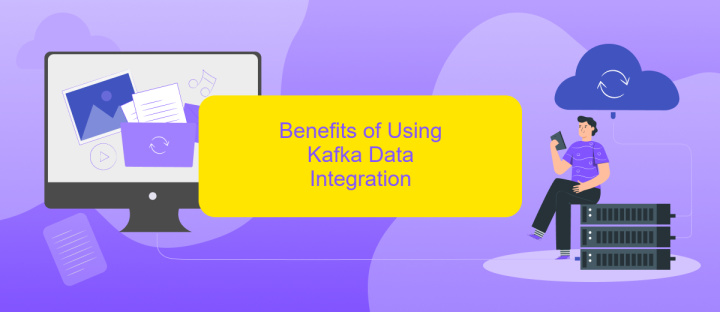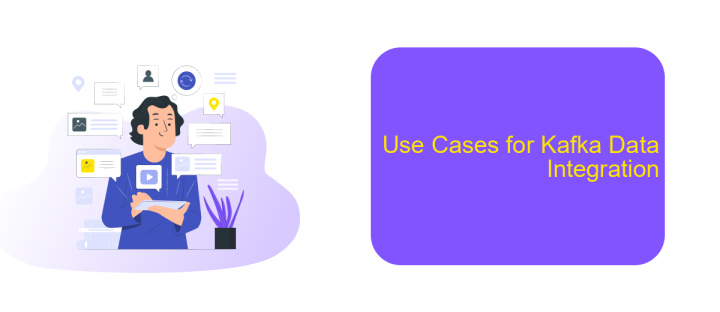Kafka Data Integration
Kafka Data Integration has become a cornerstone in modern data architecture, enabling seamless real-time data flow between diverse systems. By leveraging Apache Kafka's robust messaging capabilities, organizations can ensure high throughput, fault tolerance, and scalability. In this article, we will explore the key components, benefits, and best practices for integrating data with Kafka, providing a comprehensive guide for harnessing its full potential.
Introduction to Kafka Data Integration
Apache Kafka has emerged as a powerful tool for real-time data integration, enabling seamless data flow between different systems and applications. Its distributed streaming platform allows organizations to handle large volumes of data with low latency, making it ideal for modern data architectures. Kafka's robust ecosystem supports a variety of use cases, including event sourcing, log aggregation, and real-time analytics.
- Scalable and fault-tolerant architecture
- High throughput and low latency
- Support for stream processing with Kafka Streams and ksqlDB
- Integration with various data sources and sinks
To simplify the setup and management of Kafka data integrations, services like ApiX-Drive offer a user-friendly interface for connecting Kafka with other applications and databases. ApiX-Drive automates data workflows, reducing the complexity and time required to establish reliable data pipelines. By leveraging such tools, businesses can focus on deriving value from their data rather than dealing with integration challenges.
Components of Kafka Data Integration

Kafka Data Integration involves several key components that work together to ensure seamless data flow between various systems. The primary component is the Kafka Broker, which acts as an intermediary for storing and retrieving messages. Producers are responsible for sending data to the Kafka topics, while Consumers subscribe to these topics to process the incoming data. Kafka Connect is another crucial element, providing a framework to stream data between Kafka and other systems such as databases, cloud services, and more.
For efficient configuration and management of these integrations, tools like ApiX-Drive can be extremely beneficial. ApiX-Drive offers a user-friendly interface to set up and monitor data flows between Kafka and various external services without requiring extensive coding knowledge. This service simplifies the process of establishing connections, transforming data, and ensuring that all components work harmoniously. By leveraging ApiX-Drive, organizations can streamline their Kafka data integration processes, making it easier to maintain and scale their data infrastructure.
Benefits of Using Kafka Data Integration

Integrating Kafka into your data architecture provides numerous advantages, streamlining data flow and enhancing system performance. This robust platform is designed to handle real-time data feeds and large-scale data processing, making it an ideal choice for modern enterprises.
- Scalability: Kafka's distributed architecture allows for seamless scaling, accommodating growing data volumes without compromising performance.
- Reliability: With its fault-tolerant design, Kafka ensures data integrity and availability, even in the event of hardware failures.
- Real-Time Processing: Kafka's ability to process and analyze data in real-time enables businesses to make timely, data-driven decisions.
- Integration Capabilities: Tools like ApiX-Drive simplify the integration process, allowing for effortless connectivity between Kafka and various data sources and sinks.
- Flexibility: Kafka supports a wide range of use cases, from log aggregation to stream processing, making it a versatile addition to any data ecosystem.
By leveraging Kafka for data integration, organizations can achieve a more efficient, reliable, and scalable data infrastructure. Whether you are dealing with high-throughput data streams or complex data pipelines, Kafka provides the necessary tools and features to meet your integration needs.
Use Cases for Kafka Data Integration

Kafka has become a cornerstone for real-time data integration across various industries. Its ability to handle high-throughput data streams makes it an ideal choice for applications requiring real-time analytics, monitoring, and data processing.
One of the primary use cases for Kafka data integration is in the financial sector, where it is used for fraud detection and transaction monitoring. By integrating Kafka with various data sources, financial institutions can quickly identify suspicious activities and take immediate action.
- Real-time analytics and monitoring
- Fraud detection in financial services
- Log and event data collection
- Customer activity tracking and personalization
- Data synchronization across microservices
To simplify the integration process, platforms like ApiX-Drive offer seamless connectivity between Kafka and other data sources. ApiX-Drive allows businesses to automate data flows without extensive coding, making it easier to leverage Kafka for various use cases. Whether it's synchronizing customer data or monitoring system logs, ApiX-Drive can help streamline your Kafka data integration efforts.


Conclusion
In conclusion, Kafka Data Integration offers a robust and scalable solution for real-time data streaming and processing. Its ability to handle high-throughput, fault-tolerant data pipelines makes it an indispensable tool for modern data architectures. By integrating Kafka with various data sources and sinks, organizations can ensure seamless data flow and achieve better data consistency and reliability.
Utilizing services like ApiX-Drive can further simplify the integration process by providing user-friendly interfaces and automated workflows. ApiX-Drive enables quick and efficient connections between Kafka and other applications, reducing the need for extensive coding and manual intervention. This not only accelerates the implementation of data integration solutions but also ensures that businesses can focus on leveraging their data for actionable insights and strategic decisions.
FAQ
What is Kafka Data Integration?
How can I set up a Kafka Data Integration pipeline?
What are the benefits of using Kafka for data integration?
How do I handle schema evolution in Kafka?
Are there any tools to simplify Kafka Data Integration?
Apix-Drive will help optimize business processes, save you from a lot of routine tasks and unnecessary costs for automation, attracting additional specialists. Try setting up a free test connection with ApiX-Drive and see for yourself. Now you have to think about where to invest the freed time and money!

